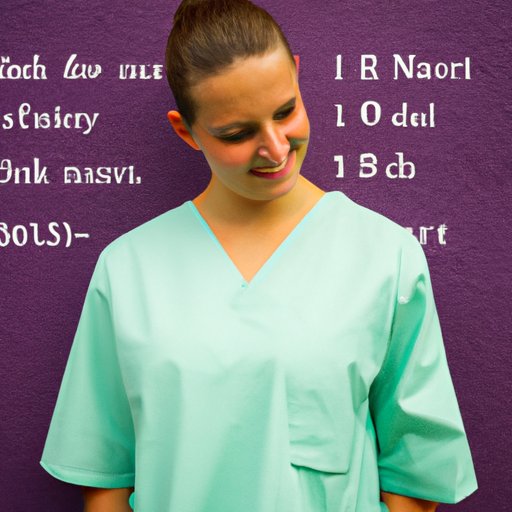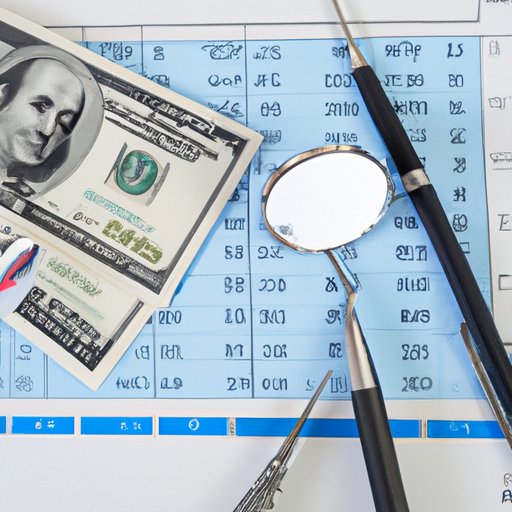Introduction
A career in dentistry offers an opportunity to make a real difference in people’s lives while earning a good salary. Becoming a dentist requires dedication and significant financial investment, however, so it’s important to understand the cost of being a dentist before embarking on this path. This article will explore the various costs associated with becoming a dentist, from tuition fees to equipment expenses.

Comparing the Cost of Becoming a Dentist to Other Healthcare Careers
When considering the cost of becoming a dentist, it’s important to compare the costs to those associated with other healthcare careers. The average cost of medical school is significantly higher than the average cost of dental school. According to the Association of American Medical Colleges (AAMC), medical students can expect to pay an average of $60,665 per year in tuition and fees at private medical schools and $37,556 per year at public medical schools. In comparison, the American Dental Education Association (ADEA) reports that the average cost of tuition and fees for dental school is $40,071 per year at private dental schools and $25,592 per year at public dental schools.
In addition to tuition, medical and dental students must also purchase equipment and supplies. The AAMC estimates that medical students will spend an average of $2,500 to $4,000 each year on books and supplies. Dental students, on the other hand, will spend an average of $4,400 to $6,000 on books and supplies. While the costs of books and supplies are slightly higher for dental students, the overall cost of dental school is still lower than the cost of medical school.

Exploring the Financial Benefits of Being a Dentist
The cost of becoming a dentist is high, but the potential financial benefits make it worth the investment. According to the Bureau of Labor Statistics, dentists earn an average annual salary of $159,200. This figure varies based on experience, specialty, and location, but even entry-level dentists typically earn more than $100,000 annually. In addition to their salaries, dentists may be eligible for tax breaks and other incentives.
Breaking Down the Cost of Dental School Tuition
Dental school tuition is one of the biggest costs associated with becoming a dentist. Most dental students rely on loans to finance their education. There are several types of loans available, including federal student loans, private loans, and dental school loans. Federal student loans offer the lowest interest rates and most flexible repayment plans, so they should be your first choice when financing your dental education. Private loans and dental school loans often have higher interest rates and less flexible repayment plans, so they should only be used as a last resort.
In addition to loans, there are also several scholarships and grants available for dental students. These awards can help reduce the cost of tuition and provide much-needed financial relief. Researching and applying for scholarships and grants takes time and effort, but the rewards can be well worth it.

Examining the Cost of Equipment and Supplies for Dentists
In addition to tuition, dentists must also purchase equipment and supplies to practice. The exact cost of these items depends on the type of practice you plan to pursue. Basic tools and instruments, such as drills, scalers, and x-ray machines, are necessary for all dentists. These items can range in cost from a few hundred dollars to several thousand dollars. Specialized practices, such as orthodontics or implantology, require additional tools and instruments, which can add to the overall cost of starting a practice.
Analyzing the Impact of Location on the Cost of Being a Dentist
The cost of becoming a dentist is not limited to tuition, equipment, and supplies. The cost of living in different areas also affects the overall cost of being a dentist. Areas with a higher cost of living typically have higher salaries, which can offset some of the additional expenses associated with living in the area. In addition, licensing fees vary by state, so dentists must factor in the cost of obtaining a license in their chosen state.
Conclusion
Becoming a dentist requires a significant financial investment. The cost of becoming a dentist includes tuition, equipment, supplies, and licensing fees. The cost of tuition can be reduced through loans, scholarships, and grants. Equipment and supplies can be expensive, but many of these items are necessary for any dentist. Finally, the cost of living in a particular area can affect the overall cost of being a dentist. Despite the cost, being a dentist can be a rewarding and lucrative career.
(Note: Is this article not meeting your expectations? Do you have knowledge or insights to share? Unlock new opportunities and expand your reach by joining our authors team. Click Registration to join us and share your expertise with our readers.)
